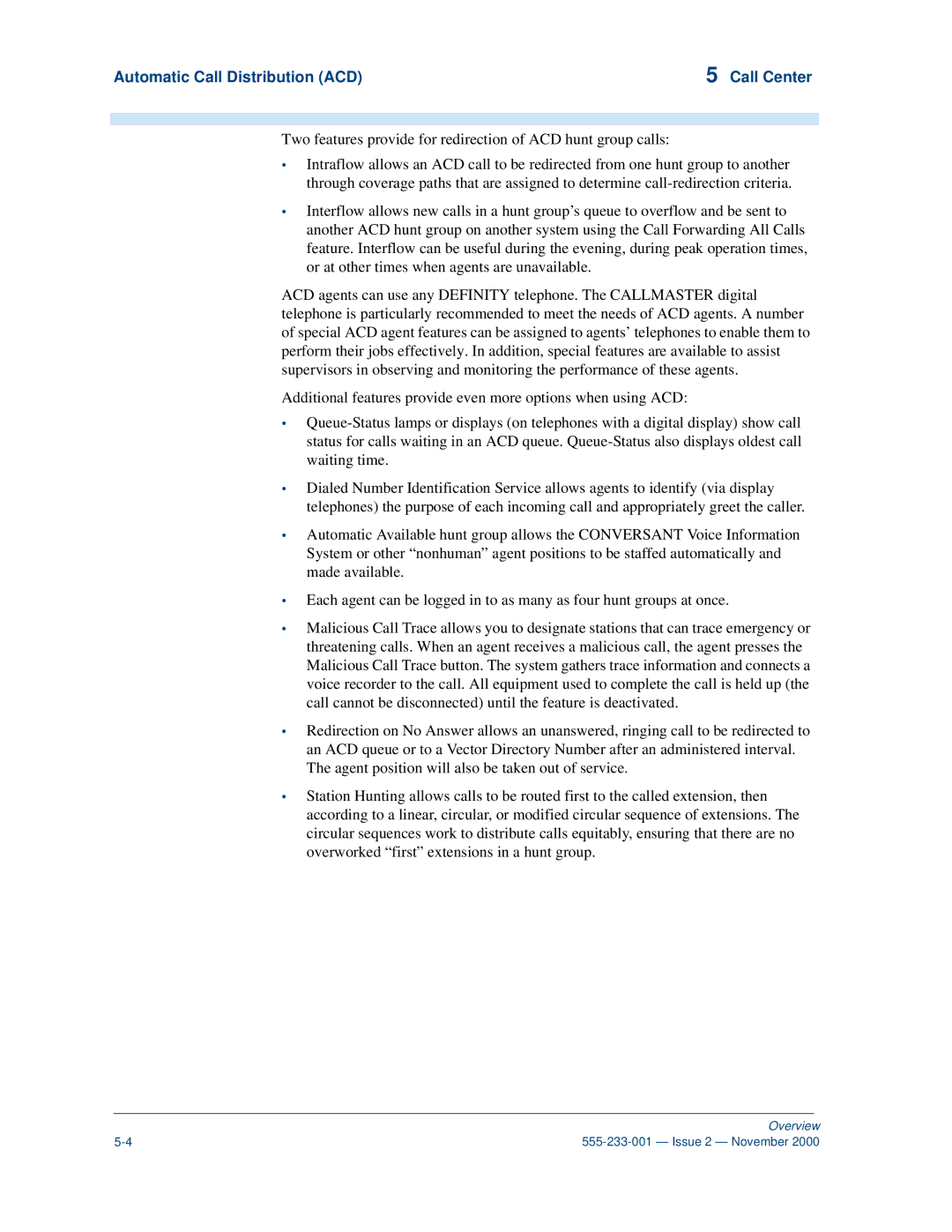
Automatic Call Distribution (ACD) | 5 Call Center |
Two features provide for redirection of ACD hunt group calls:
•Intraflow allows an ACD call to be redirected from one hunt group to another through coverage paths that are assigned to determine
•Interflow allows new calls in a hunt group’s queue to overflow and be sent to another ACD hunt group on another system using the Call Forwarding All Calls feature. Interflow can be useful during the evening, during peak operation times, or at other times when agents are unavailable.
ACD agents can use any DEFINITY telephone. The CALLMASTER digital telephone is particularly recommended to meet the needs of ACD agents. A number of special ACD agent features can be assigned to agents’ telephones to enable them to perform their jobs effectively. In addition, special features are available to assist supervisors in observing and monitoring the performance of these agents.
Additional features provide even more options when using ACD:
•
•Dialed Number Identification Service allows agents to identify (via display telephones) the purpose of each incoming call and appropriately greet the caller.
•Automatic Available hunt group allows the CONVERSANT Voice Information System or other “nonhuman” agent positions to be staffed automatically and made available.
•Each agent can be logged in to as many as four hunt groups at once.
•Malicious Call Trace allows you to designate stations that can trace emergency or threatening calls. When an agent receives a malicious call, the agent presses the Malicious Call Trace button. The system gathers trace information and connects a voice recorder to the call. All equipment used to complete the call is held up (the call cannot be disconnected) until the feature is deactivated.
•Redirection on No Answer allows an unanswered, ringing call to be redirected to an ACD queue or to a Vector Directory Number after an administered interval. The agent position will also be taken out of service.
•Station Hunting allows calls to be routed first to the called extension, then according to a linear, circular, or modified circular sequence of extensions. The circular sequences work to distribute calls equitably, ensuring that there are no overworked “first” extensions in a hunt group.
| Overview |
